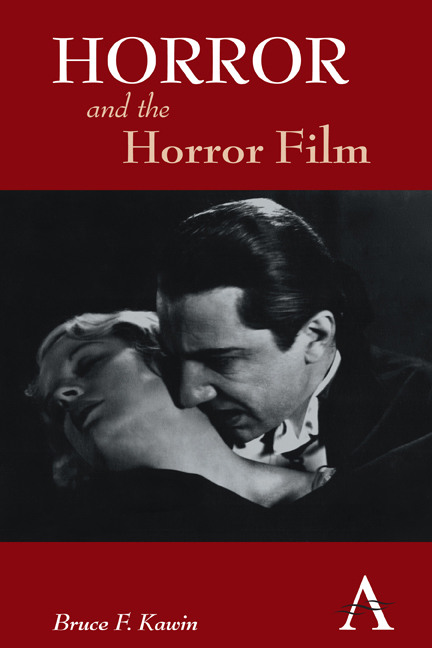Book contents
- Frontmatter
- Dedication
- Contents
- Preface
- List of Figures
- Part I Approaching the Genre
- 1 Horror
- 2 The Monster at the Bedroom Window
- 3 Fear in a Frame
- Part II Subgenres: The Book of Monsters
- 4 Monsters
- 5 Supernatural Monsters
- 6 Humans
- Part III Related Genres
- 7 Horror Comedy
- 8 Horror Documentary
- Notes
- Films Cited
- Selected Bibliography
- Index
- Frontmatter
- Dedication
- Contents
- Preface
- List of Figures
- Part I Approaching the Genre
- 1 Horror
- 2 The Monster at the Bedroom Window
- 3 Fear in a Frame
- Part II Subgenres: The Book of Monsters
- 4 Monsters
- 5 Supernatural Monsters
- 6 Humans
- Part III Related Genres
- 7 Horror Comedy
- 8 Horror Documentary
- Notes
- Films Cited
- Selected Bibliography
- Index
Summary
I have a blood disorder similar to hemophilia, and my father was a hunchback. I came to the horror film naturally. I thought it addressed the terms of my real world as well as my imagination. It seemed to me that in a horror film anything could happen, anything could be dreamt of and shown, while all the other movies were stuck in the known world.
I was scared of a lot of things, and a horror film calmed me. I’m still afraid of excessive bleeding and I remember—or more exactly, can't forget—vomiting spaghettilike balls of clots after my tonsils were removed, and a doctor using big forceps to snip off the scabs that were closing my throat as the thick blood built up beneath them. As hands or matched parts fit together, the horror film met my fears with its world full of fear. It offered an alternative and a complement to anxiety with its made-up anxiety. It lived up to the energy inside me. Sometimes it scared me—the first mummy film I saw, Pharaoh's Curse, gave me bad nightmares at 11, but I still enjoyed it. The thrills and visions, especially the look of a new monster, compensated for the risk of nightmares. They were by far my favorite movies, and this book attempts to convey a mature appreciation for them along with a comprehensive view of their values, their narrative strategies, their artistic achievements, their relations to reality and fantasy and their claims to profundity and cinematic power.
The horror film is a construct of fear and revulsion, and this vivid, sometimes gruesome book examines the frightful and disgusting in the clearest possible terms. These observations are based on close viewings of the films, and not on what has been written about them. The films are the key data here; this is not a survey of horror criticism and theory, although relevant earlier work is of course acknowledged. Instead it is a fresh, comprehensive look at how the horror film frightens, disturbs, shocks and revolts the viewer, the effect and the art of it and some of the good that comes from it.
- Type
- Chapter
- Information
- Horror and the Horror Film , pp. xi - xiiPublisher: Anthem PressPrint publication year: 2012



